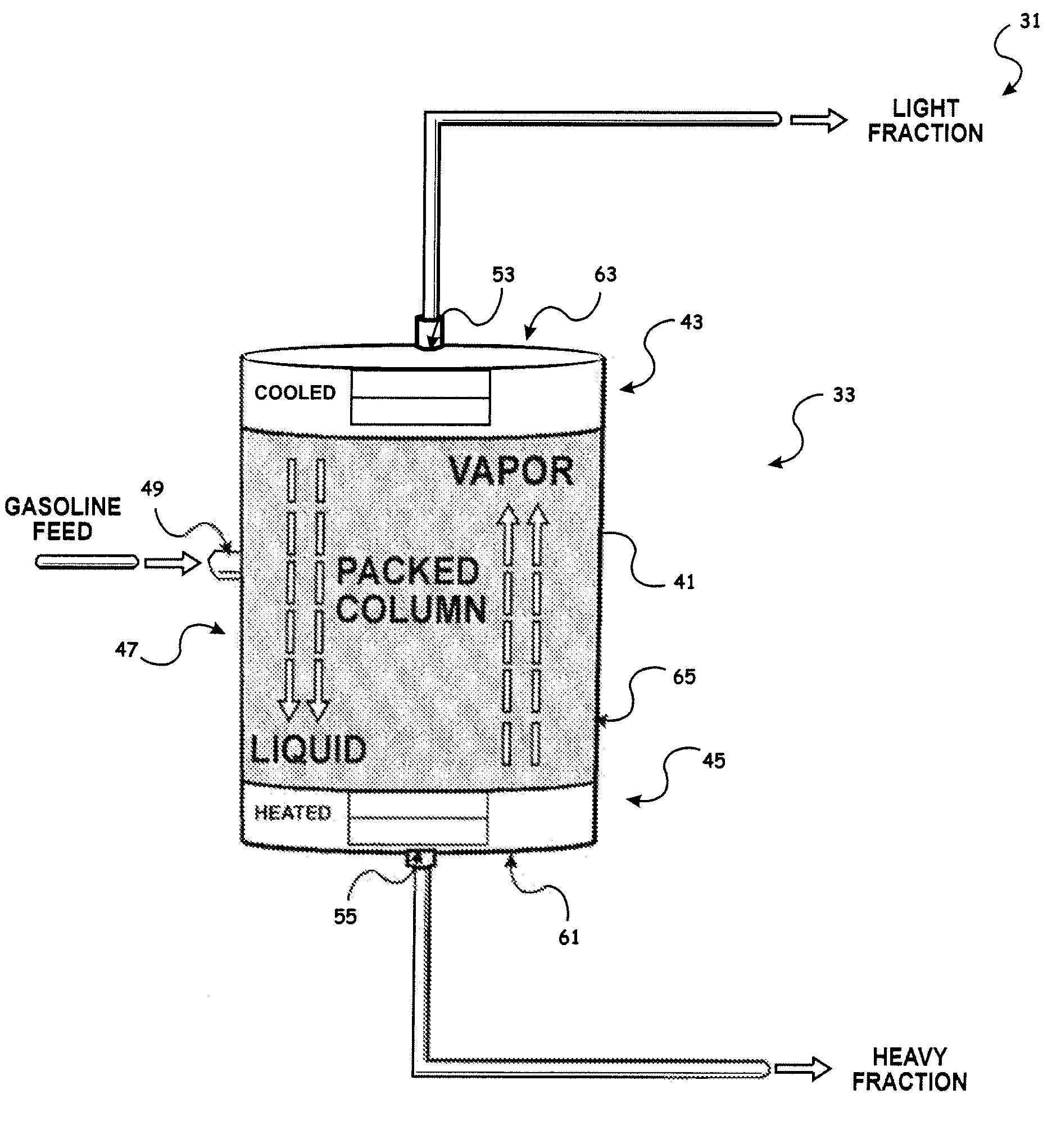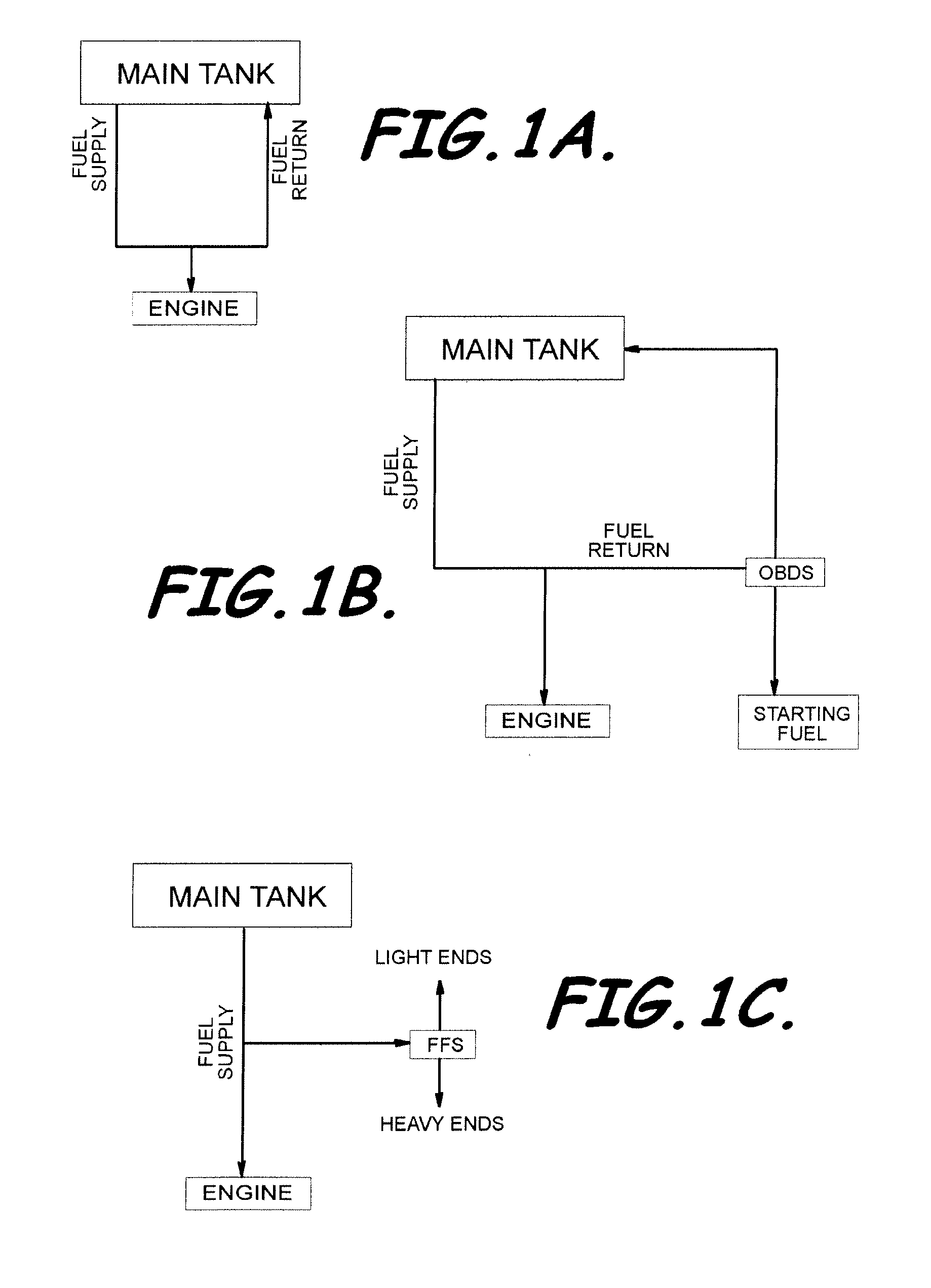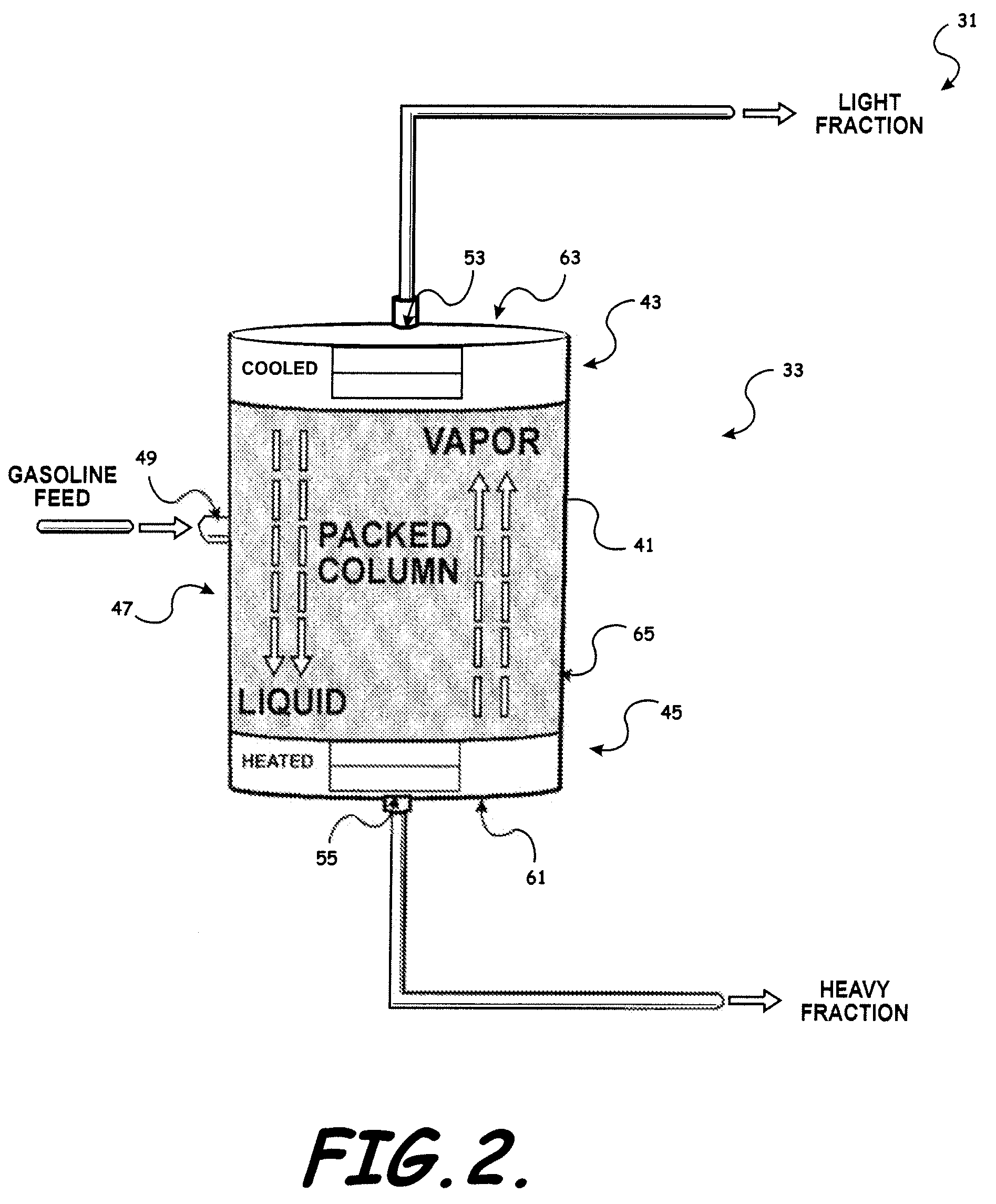On-board fuel fractionation system and methods to generate an engine starting fuel
a fuel fractionation system and engine technology, applied in the field of engine fuel systems to fuel powered engines, can solve the problems of further reduction of exhaust emissions, poor vaporization of a sufficient fraction of fuel, and undesirable air pollution from internal combustion engines, etc., to achieve faster separation, improve performance, usability and packaging
- Summary
- Abstract
- Description
- Claims
- Application Information
AI Technical Summary
Benefits of technology
Problems solved by technology
Method used
Image
Examples
Embodiment Construction
[0033]The present invention will now be described more fully hereinafter with reference to the accompanying drawings, which illustrate embodiments of the invention. This invention may, however, be embodied in many different forms and should not be construed as limited to the illustrated embodiments set forth herein. Rather, these embodiments are provided so that this disclosure will be thorough and complete, and will fully convey the scope of the invention to those skilled in the art. Like numbers refer to like elements throughout. Prime notation, if used, indicates similar elements in alternative embodiments.
[0034]Provided is a Fuel Fractionation System (FFS), which is an evolution of the On-Board Distillation System (OBDS). The various embodiments of the FFS differ from the OBDS and other alternative fuel systems in a number of very significant ways. FIGS. 1A-11 assist in illustrating embodiments of the FFS and methods and in highlighting some of these differences, particularly as...
PUM
| Property | Measurement | Unit |
|---|---|---|
| boiling point | aaaaa | aaaaa |
| temperature | aaaaa | aaaaa |
| temperatures | aaaaa | aaaaa |
Abstract
Description
Claims
Application Information
 Login to View More
Login to View More - R&D
- Intellectual Property
- Life Sciences
- Materials
- Tech Scout
- Unparalleled Data Quality
- Higher Quality Content
- 60% Fewer Hallucinations
Browse by: Latest US Patents, China's latest patents, Technical Efficacy Thesaurus, Application Domain, Technology Topic, Popular Technical Reports.
© 2025 PatSnap. All rights reserved.Legal|Privacy policy|Modern Slavery Act Transparency Statement|Sitemap|About US| Contact US: help@patsnap.com



